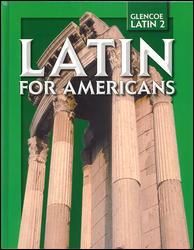1.
A) family associations with the common people's cause B) personal conviction C) shrewd political insight D) all of the above 2.
A) First Triumvirate B) Second Triumvirate C) Third Triumvirate D) Fourth Triumvirate 3.
A) victory B) three-man rule C) united in anger D) monumental arch 4.
B.C., Caesar was _____.A) at war with Pompey and the Senate B) allied with conservative senators C) politically dominated by Bibulus D) elected to the consulship 5.
A) his troops south into Hispania B) from consuming ambition for military power and glory to a desire for peaceful retirement from public life C) from protecting Italy and southern France to aggressively reducing Transalpine Gaul to a Roman province D) the gold he acquired into the hands of Gallic tribal leaders to build schools and homes 6.
A) crossing from Gaul to Corsica B) crossing the Rubicon C) crossing the Rhone D) crossing the Tiber to Rome 7.
A) orator B) financier C) philosopher D) artist 8.
A) 49 B.C. B) 48 B.C. C) 45 B.C. D) 44 B.C. 9.
A) favored by Fortune B) above suspicion C) full of life and never strife D) no gossip 10.
A) exercitus B) excursus C) excidium D) expertus 11.
A) Roman citizens B) foreign mercenaries C) slaves D) none of the above 12.
A) brigade B) division C) A and B D) none of the above 13.
A) cohorts B) companies C) centuries D) auxiliaries 14.
A) raiders, foragers, slingers, and archers B) noncombatants C) volunteers D) spies 15.
A) servants B) muledrivers C) traders D) all of the above 16.
A.D. by _____.A) Exegesis B) Vegetius C) Machiavelli D) Bellicus 17.
A) fear of invasion by Gauls and Germans B) Treaty of Cisalpina C) cultural influence of the Normans D) none of the above 18.
A) the Rhone B) the Rhine C) the Rubicon D) the Danube 19.
A) Teutonic B) Iberian C) Gallic D) Latin 20.
A) vulgate B) vulgus C) vulgar D) vox populi





